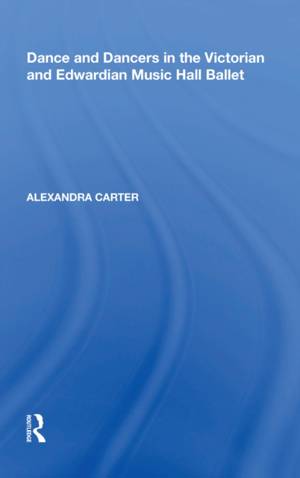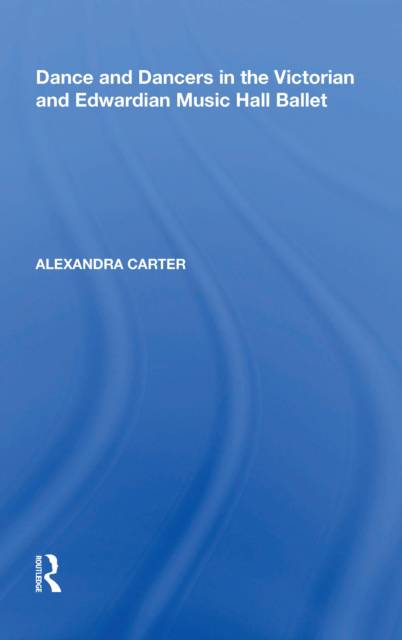
- Afhalen na 1 uur in een winkel met voorraad
- Gratis thuislevering in België vanaf € 30
- Ruim aanbod met 7 miljoen producten
- Afhalen na 1 uur in een winkel met voorraad
- Gratis thuislevering in België vanaf € 30
- Ruim aanbod met 7 miljoen producten
Zoeken
Dance and Dancers in the Victorian and Edwardian Music Hall Ballet
Alexandra Carter
Hardcover | Engels
€ 195,95
+ 391 punten
Omschrijving
First published in 2005. The Victorian and Edwardian music hall ballet has been a neglected facet of dance historiography, falling prey principally to the misguided assumption that any ballet not performed at the Opera House or 'legitimate' theatre necessarily meant it was of low cultural and artistic merit. Here Alexandra Carter identifies the traditional marginalization of the working class female participants in ballet historiography, and moves on to reinstate the 'lost' period of the music hall ballet and to apply a critical account of that period. Carter examines the working conditions of the dancers, the identities and professional lives of the ballet girls and the ways in which the ballet of the music hall embodied the sexual psyche of the period, particularly in its representations of the ballet girl and the ballerina. By drawing on newspapers, journals, theatre programmes, contemporary fiction, poetry and autobiography, Carter firmly locates the period in its social, economic and artistic context. The book culminates in the argument that there are direct links between the music hall ballet and what has been termed the 'birth' of British ballet in the 1930s; a link so long ignored by dance historians. This work will appeal not only to those interested in nineteenth century studies, but also to those working in the fields of dance studies, gender studies, cultural studies and the performing arts.
Specificaties
Betrokkenen
- Auteur(s):
- Uitgeverij:
Inhoud
- Aantal bladzijden:
- 186
- Taal:
- Engels
Eigenschappen
- Productcode (EAN):
- 9780815346272
- Verschijningsdatum:
- 20/11/2017
- Uitvoering:
- Hardcover
- Formaat:
- Genaaid
- Afmetingen:
- 152 mm x 235 mm
- Gewicht:
- 335 g

Alleen bij Standaard Boekhandel
+ 391 punten op je klantenkaart van Standaard Boekhandel
Beoordelingen
We publiceren alleen reviews die voldoen aan de voorwaarden voor reviews. Bekijk onze voorwaarden voor reviews.












